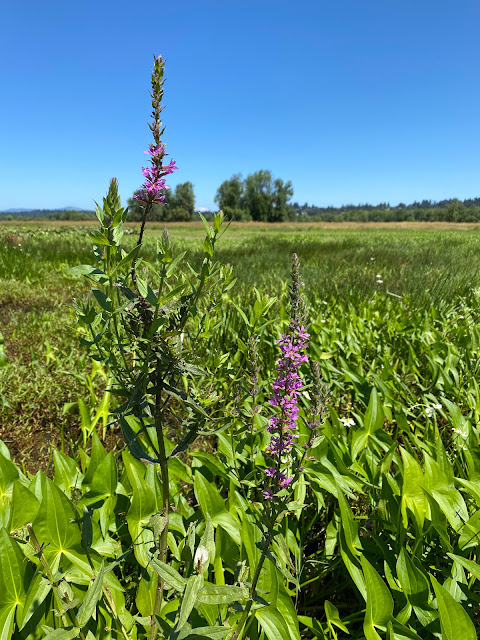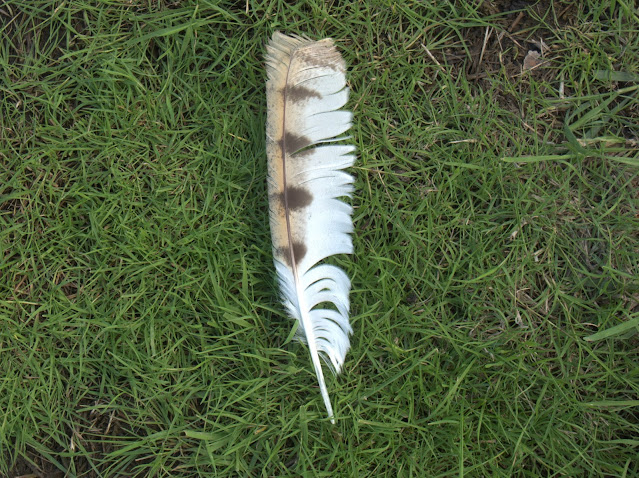August 31, 2020 - Preparing for Fall
 |
One very large Bulrush plant that I found during my search around the hunt blinds in Middle Lake. |
Hunt blind searches
As fall approaches, so does hunting season, which officially begins in the latter part of October! Waterfowl hunting is permitted on approximately 760 acres of the Ridgefield National Wildlife Refuge in a spaced blind hunting area adjacent to the Auto Tour Route. Before hunting season officially begins, it is important to make sure that there are no invasive plants surrounding the hunt blinds - because hunters may unknowingly aid in seed dispersal when walking through wetlands that are infested with invasive plants.
Making a map
A large part of my job involves going out into the field and searching for invasive plants to map with a GPS. The purpose of this is so that we my be able to find the plant later - to either come back and spray or remove the plant. One of the wetlands that was found to have a high quantity of Bulrush and Purple Loosestrife plants this year, was that of Middle Lake (accessible via the Kiwa trail). In Middle Lake, their are 2 hunt blinds - blind 13, and 13a - both of which were found to have invasive plants relatively close to them during our volunteer work-party searches. Due to this reason, Keith asked me to create a map of Middle Lake depicting where invasive plants were found - relative to their position near the hunt blinds in the lake. This map was used in a meeting about the upcoming hunt season, which made me feel quite accomplished!
When I create maps I simply take the UTM coordinates provided by the GPS - convert them into latitude and longitude coordinates using a free GPS app that I downloaded on my phone - and then I plug the points into google maps!
Collecting Native Seeds
Spirea
As a fast growing Northwest native deciduous shrub, western or Douglas spirea (also referred to as hardhack or steeplebush) grows 5'-6' tall and nearly as wide. Western spirea is best known for its towering rose colored flowers, resembling cotton candy cones, which appear from June through September. Home gardeners should consider this species for their native landscape designs.
The beautiful flowers of this plant attract butterflies, bees and other insects. Spent flower clusters are dark brown, and are retained as dried out forms over the winter. When Douglas spirea forms dense thickets, it is a perfect hiding spot for small mammals, amphibians, and birds.
Golden Rod
Relatively maintenance free and untroubled by most pests and diseases, it is also highly favored by butterflies and many other beneficial insects. The seeds after flowering are a good autumn food source for songbirds. It is a useful plant to have in your garden, as well as a sunny, refreshing burst of late-season color.
More than a hundred varieties of goldenrod exist, with one for every climate. Many are native to the United States. Goldenrod plants are clump-forming perennial wildflowers that exist on rainwater and add a golden beauty to the landscape. Often thought of as the cause of summer allergies, the species is falsely accused, as the pollen from allergy-creating ragweed is present at the time of goldenrod blooms. All golden rods are late bloomers, flowering in late summer throughout fall with stunning bright yellow flowers.
 |
A native Golden Rod plant that I collected seeds from out in the field. If you look closely, you should be able to see two honeybees going in for a sweet snack. |


Comments
Post a Comment